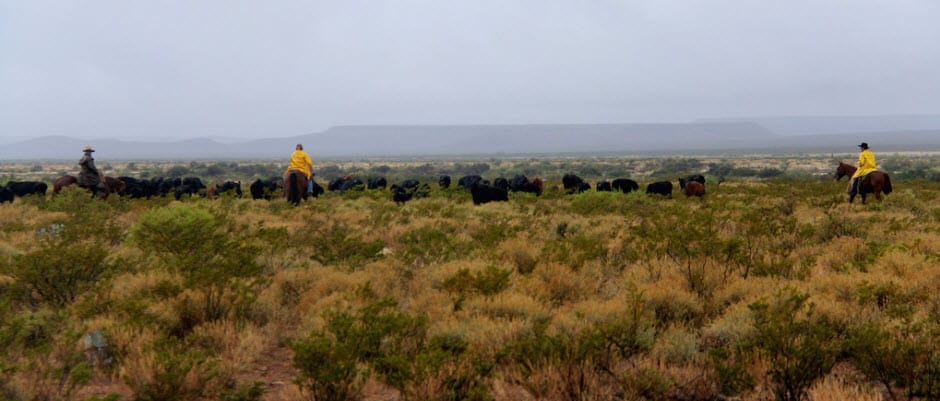Livestock Management for Coexistence with Large Carnivores, Healthy Land and Productive Ranches

Experience is proving that when cattle are run in large herds they are less susceptible to predation, especially from smaller predators like coyotes and Mexican Wolves.
LIVESTOCK MANAGEMENT FOR COEXISTENCE WITH LARGE CARNIVORES, HEALTHY LAND AND PRODUCTIVE RANCHES
A white paper by Matt Barnes, Field Director for Rangeland Stewardship
Keystone Conservation, Bozeman, Montana
Ranchers and rangeland managers can apply many of the same approaches that work for rangeland health and livestock production to reduce conflicts with large carnivores. This paper synthesizes evidence from the rangeland, wildlife, and animal sciences into a cohesive argument: modeling livestock management after the grazing patterns and reproductive cycles of wild ungulates in the presence of their predators can improve rangeland health and livestock production—and increase the ability of ranching operations to coexist with native carnivores. The central anti-predator behavior of wild grazing animals is to form large, dense herds that then move around the landscape to seek fresh forage, avoid fouled areas, and escape predators. Grazing management involving high stocking density and frequent movement, such as rotational grazing and herding with low-stress livestock handling, can improve rangeland health and livestock production, by managing the distribution of grazing across time, space, and plant species. Such management can also reduce the susceptibility of livestock to predation.
Livestock – large carnivore coexistence practitioners can be more effective by expanding from a direct focus on carnivores and predation-prevention tools to the broader social-ecological context of ranches and rural communities, especially livestock management. Domestic animals, after all, are much more manageable. Moreover, only within certain livestock management contexts can preventative or non-lethal tools be applied effectively.
Available at: http://www.keystoneconservation.us/PDFs/KeystoneConservation_2015_WhitePaper.pdf
Based on experience, we have concluded that killing predators wastes money, precious biodiversity and harms the eco-system.
Traditional cattle ranchers often say that coyotes and lions must be killed to protect cattle. Yet, we have run concentrated herds of up to 1,000 stockers among cougar, bobcats and coyotes for 15 years. We have never lost one to proven predation, never observed an animal under attack, neither seen nor treated a living animal for claw or bite wounds. Predators, including cougar, will scavenge carcasses: this is assumed to prove predation. Most predator removals are conducted under that assumption.
Planned grazing is good for plants and predator protection. Predators change wild animal behavior in ways that help plants. Healthier plants are good for cattle and wildlife.

